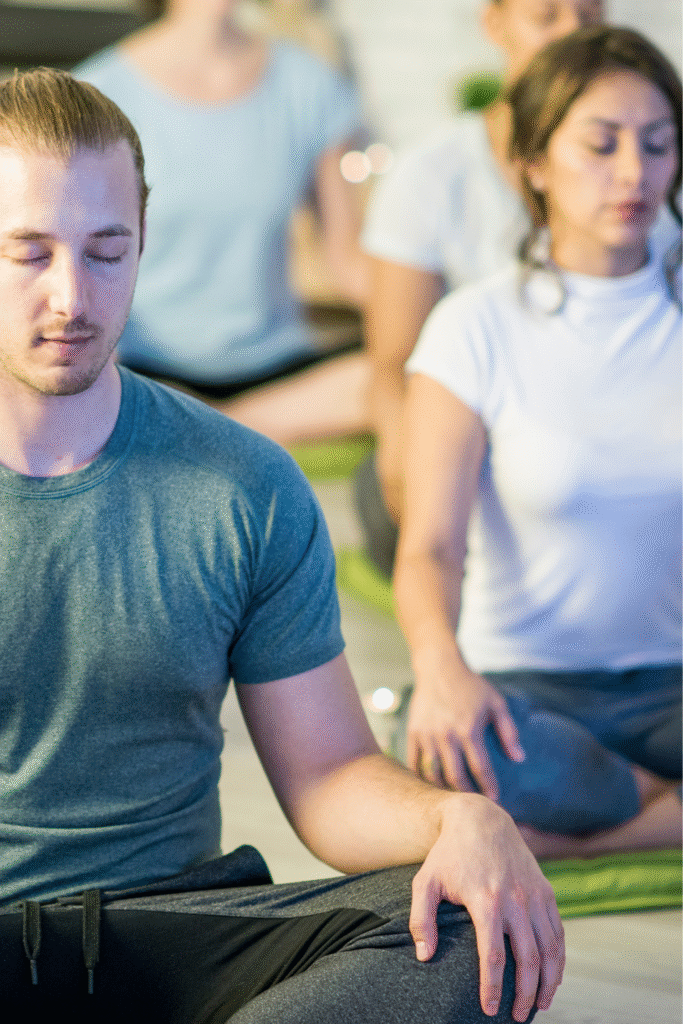Introduction
In a world that moves faster each day, the need for inner peace and mental clarity has never been greater. From constant notifications to unrelenting responsibilities, our minds are often overstimulated and overwhelmed. This is where the ancient practice of meditation becomes a powerful tool for achieving calmness and focus.
Meditation is not just a relaxation technique; it’s a transformational tool rooted in mindfulness, self-awareness, and personal growth.
This blog explores how meditation can help you achieve a calm and focused mind, why it works, and how you can integrate it into your daily life for lasting personal transformation.
Table of Contents
- What Is Meditation?
- The Science Behind Meditation and the Brain
- Benefits of Meditation for Mind and Body
- Types of Meditation for Calm and Focus
- Getting Started: Simple Techniques for Beginners
- Creating a Daily Meditation Routine
- Overcoming Common Meditation Challenges
- Enhancing Focus and Productivity Through Mindfulness
- Meditation and Emotional Intelligence
- Deepening Your Practice with Bahlon’s Insights
- Final Thoughts: Meditation as a Lifelong Practice
- FAQs About Meditation
1. What Is Meditation?
Meditation is a mental practice that trains attention and awareness. It’s about observing your thoughts without judgment and learning to be present in the moment. Unlike passive relaxation, meditation requires active engagement with your inner world.
There are many forms of meditation, including mindfulness, transcendental, loving-kindness, and visualization-based techniques. While the styles may differ, the goal remains the same: to quiet the mind and achieve a state of focused awareness.
2. The Science Behind Meditation and the Brain
Meditation has profound effects on the brain. Studies using functional MRI scans reveal that regular meditation:
- Reduces activity in the default mode network (DMN), associated with mind-wandering.
- Increases gray matter density in areas related to memory, learning, and emotional regulation.
- Strengthens the prefrontal cortex, enhancing decision-making and concentration.
These changes improve not just your mood but also your capacity to stay focused in an age of distraction.
3. Benefits of Meditation for Mind and Body
Meditation offers numerous benefits:
- Reduces stress and anxiety
- Improves emotional regulation
- Enhances concentration and cognitive function
- Promotes better sleep
- Supports immune system health
- Increases self-awareness and compassion
These benefits contribute significantly to personal growth, self-mastery, and overall well-being.
4. Types of Meditation for Calm and Focus
Here are a few meditation techniques especially effective for cultivating calm and focus:
a. Mindfulness Meditation
Focuses on observing thoughts and feelings without judgment.
b. Concentration Meditation
Involves focusing on a single object (e.g., breath, candle, mantra).
c. Guided Meditation
Uses recorded audio or a teacher’s guidance to help you visualize and relax.
d. Loving-Kindness Meditation
Cultivates compassion by focusing on sending goodwill to yourself and others.
e. Walking Meditation
Combines physical movement with meditative awareness.
5. Getting Started: Simple Techniques for Beginners
Starting a meditation practice doesn’t require special equipment or a lot of time. Here’s a basic technique to try:
5-Minute Breath Awareness Meditation
- Sit comfortably with your back straight.
- Close your eyes and take a few deep breaths.
- Focus on the sensation of air entering and leaving your nostrils.
- When your mind wanders, gently bring it back to the breath.
- Continue for five minutes.
Consistency is more important than duration. Even a few minutes daily can create profound change over time.
6. Creating a Daily Meditation Routine
To build a habit, integrate meditation into your daily schedule:
- Set a specific time each day.
- Create a calm and quiet space.
- Use an app or timer.
- Keep a journal to track progress.
Start small and gradually increase the time as the habit forms.
7. Overcoming Common Meditation Challenges
Many beginners face similar hurdles:
- Restlessness or boredom: Accept these feelings and continue.
- Sleepiness: Try meditating sitting up or during a more alert time.
- Impatience: Growth takes time; practice compassion toward yourself.
- Distractions: Acknowledge them and return to your breath.
These challenges are part of the learning process. With practice, they diminish
8. Enhancing Focus and Productivity Through Mindfulness
Mindfulness meditation improves your ability to concentrate and enhances cognitive flexibility. Regular practice:
- Trains the brain to focus on one task at a time.
- Reduces the tendency to multitask.
- Improves memory retention.
- Enhances creativity by clearing mental clutter.
This makes mindfulness an essential tool not just for inner calm, but also for workplace and academic performance.
9. Meditation and Emotional Intelligence
Meditation fosters self-awareness and emotional regulation, two key components of emotional intelligence (EQ). It helps you:
- Recognize emotional triggers
- Respond rather than react
- Empathize with others
- Communicate more effectively
As EQ improves, relationships deepen, and your sense of connection and empathy grows.
10. Deepening Your Practice with Bahlon’s Insights
Bahlon, a celebrated higher-consciousness entity, teaches that meditation is not merely a mental discipline, but a spiritual journey. Through Bahlon’s guidance:
- Meditation becomes a gateway to your inner energy field.
- You learn to connect with higher levels of intuition and wisdom.
- Inner peace is no longer an abstract goal—it becomes a lived reality.
Incorporating Bahlon’s teachings adds depth and transcendence to the practice, helping you access higher frequencies of consciousness and personal evolution.
11. Final Thoughts: Meditation as a Lifelong Practice
Meditation is not a destination, but a lifelong journey of becoming. Each session brings you closer to your true self. With regular practice, you’ll notice:
- A quieter mind
- Increased focus
- Deep inner peace
- A heightened sense of purpose
Personal growth through meditation is both practical and profound. As you continue your journey, remember: every breath is an opportunity to return to yourself.
12. FAQs About Meditation
Q1: How long should I meditate each day?
Start with 5–10 minutes and gradually build up to 20–30 minutes as you get comfortable.
Q2: Do I need to clear my mind completely?
No. The goal is not to stop thinking, but to observe your thoughts without getting caught in them.
Q3: What if I miss a day?
That’s okay. Just return to your practice the next day without judgment.
Q4: Can children or teenagers benefit from meditation?
Absolutely. Meditation can help young people develop focus, manage stress, and build emotional resilience. Simple mindfulness exercises are a great starting point.
Q5: Do I need a teacher or can I learn on my own?
While a teacher or guide can be helpful, especially in the beginning, many people successfully learn through books, apps, or online resources.
Q6: Is it normal to feel emotional during meditation?
Yes, meditation can bring up repressed emotions. This is a sign of inner healing. Simply observe your feelings with compassion and let them pass naturally.








